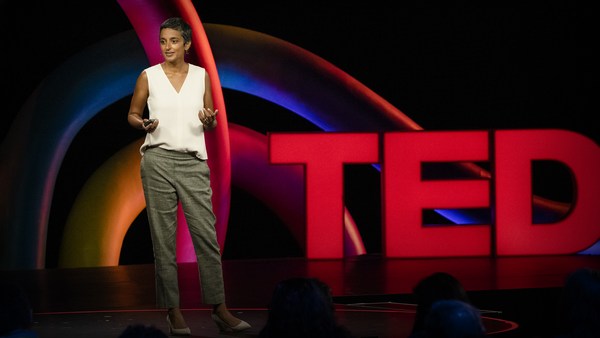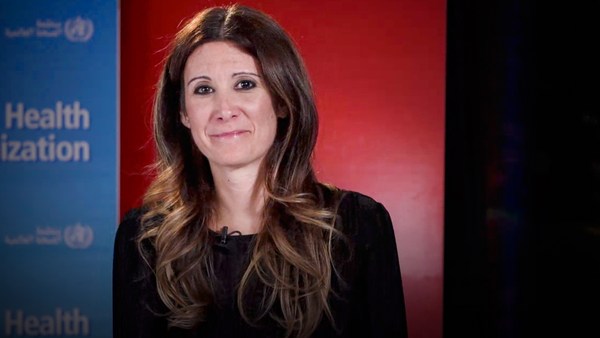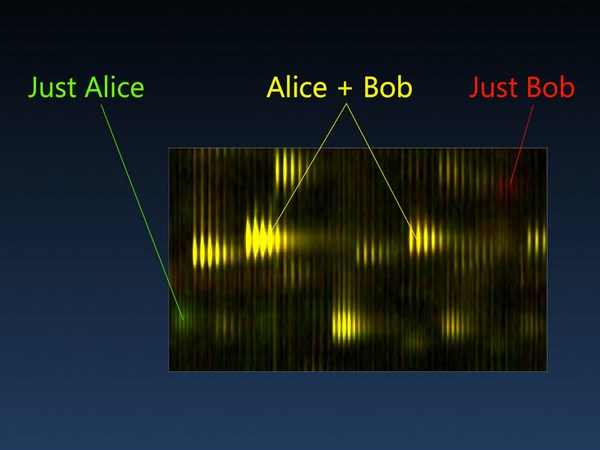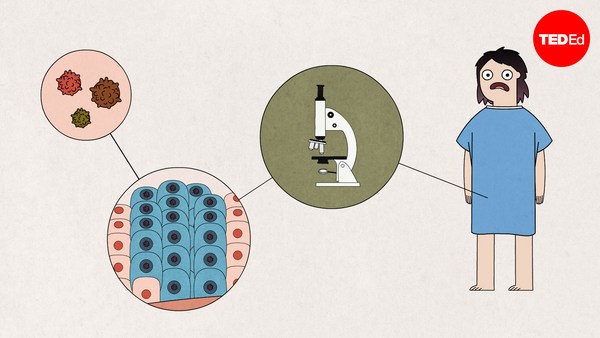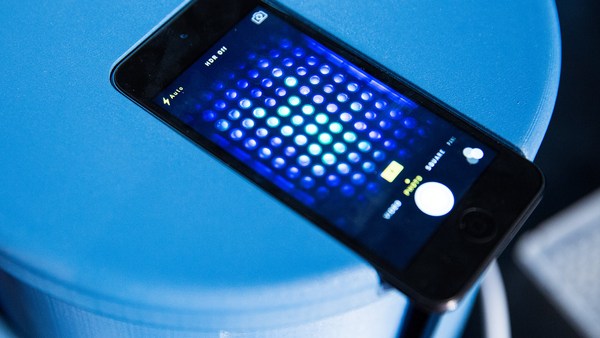Now, many of the people watching this talk by now will have had one, two, three or even four doses of a messenger RNA vaccine. With billions of these shots now in arms. it’s clear that this new way of making vaccines is both remarkably safe and incredibly effective.
But did you know it's not the vaccine itself that's keeping you safe? It's actually you. Because the human body has amazing powers to both prevent and cure disease by making its own medicines. You just need to know what medicine to make. And that's what your vaccine gave you. Simply a set of instructions for how to protect yourself against SARS-CoV-2.
Now vaccines are only the beginning. As I said before, the advent of mRNA vaccines is heralding in an entirely new era of medicines. mRNAs give us the ability to not only prevent disease but also treat previously intractable disorders. But before I get to that, let's talk about what is this new way of medicines really about? Well, it all comes down to proteins.
Now, you may think of protein as simply something that you need to eat, an important part of your diet, something that's important for you to build muscle. But it's not just muscle that contains protein. Protein makes up a huge fraction of the incredibly complicated ecosystem that's your entire body. In many ways, your body functions like a large city, full of myriad buildings, interconnected buildings, with lots of different structures. Now, just as the word "building" fails to capture the incredible variety of structures that make up any large city, the generic term "protein" gives no clue as to the incredible variety of molecular architectures at the molecular level. Like buildings, proteins are not monolithic. Our body makes many proteins. Some, like the collagen in our skin that makes our skin tough but pliable. Like the actin and myosin in our muscles that enable us to move. Or our blood is full of hemoglobin, ferrying oxygen around. Antibodies protecting us from disease, and clotting factors that close up our wounds. And for any of you that have ever cracked a biochemistry textbook, this should look familiar. This is the metabolic chart of the human body. These are all of the reactions in your body that are keeping you alive and well right now. And each one of those reactions is catalyzed by a different protein whose names are shown here in blue. So proteins are not only what makes up the bulk of your body, they’re also what make your body tick and keep you well.
Now, if we think again about buildings, the structures of buildings may look quite different in the end, but they're all made of a limited set of building materials and which of those building materials are used and how they're arranged, and how they're attached to one another gives the buildings their final form. The same is true of proteins. If we zoom down to the molecular level, we can see that proteins, if we unravel their three-dimensional architecture, are actually just long strings of building blocks. And these building blocks have different shapes and different propensities to interact with one another. So it's which building blocks are used and the order in which they are in the chain that gives a protein is three-dimensional shape. Now here I'm only showing three proteins, but creating and maintaining a healthy human requires the combined action of over 100,000 different types of protein. And our bodies make them all. Thus our bodies are remarkable protein factories. At the molecular level, the numbers are truly mind-blowing. Each of the 30 trillion cells in your body -- that's three with 13 zeros -- contains between one and 10 billion protein molecules. That means that you have as many protein molecules in your body as there are stars in the known universe.
Now each different cell type in your body makes a different kind of protein, a different set of proteins, like the rods and cones in my eye that are detecting light right now and the neurons in my brain that are interpreting that light and enabling me to see you right now. So they make a particular set of proteins unique to it. And like any complex building project, you can imagine that the process of protein synthesis needs to be tightly regulated so that the right protein is made at the right time and in the right place. But of course, with anything so complicated, it's perhaps not surprising that there's an occasional mistake, a fault in the algorithm.
Let's go back to that metabolic chart. It’s estimated that one in 1,000 newborns are born without the ability to make one of the proteins on this chart. Therefore, they have lifelong complications due to inborn metabolic errors. Let's take just one of those. Let's talk about von Gierke's disease or glycogen storage disease I. This is due to the lack of a protein circled here in red, whose job it is to release stored sugars so that you can maintain a healthy blood sugar level while you're fasting. So von Gierke's disease patients can't fast. They must constantly eat small amounts of carbohydrates, including getting up every one or two hours during the night to eat raw cornstarch. Now, imagine the toll that this takes on parents. If they are ever to miss a feeding of their child, their child could slip into severe hypoglycemia, seizures and possibly death. But even if these patients can keep up this endless feeding cycle, they are plagued by lifelong complications, including delayed puberty, frequent infections, kidney disease and liver cancer.
So von Gierke's disease is just one example of a disorder where we know what protein is missing. What if we could give those patients back the ability to make that missing protein? Then we could actually treat their disease instead of just managing their symptoms. And that's where mRNA comes in. That's also where I come in. You see, I spent the better part of my career as an academic doing curiosity-based research into the fundamental principles of how proteins are made. And my specialty was messenger RNA. Like proteins, messenger RNAs are long chainlike molecules composed of building blocks. The four building blocks that make up messenger RNAs form what is known as the genetic code. As their name implies, messenger RNAs carry messages: messages that are translated by your body in order to create proteins. Thus messenger RNAs are the language of life. And the human body has a lot to say.
So, like proteins, your cells are chock-full of messenger RNA. Every one of your 30 trillion cells has hundreds of thousands of messenger RNA molecules. Messenger RNAs are an essential component of all living organisms. So when you are eating protein-rich foods, you're not only eating protein, you're also eating lots of messenger RNA. Your body takes the messenger RNA in the food that you consumed, breaks it down into those component parts and then builds new messenger RNAs specific to your needs. Now this continual destruction and rebuilding is a feature true of almost all proteins and messenger RNAs in your body. Let's take, for example, the circadian clock. This is the timer in your body that tells you when to be active and when to sleep. The proteins that make up this clock appear and disappear with remarkable regularity every day. The way that this is accomplished is that your body makes the messenger RNAs that encode those proteins appear and disappear every day. Every day for your entire life, you get your daily dose of clock messenger RNAs producing clock proteins.
Now three properties of proper medicines are that their effects are of limited duration, that their effects are dose-dependent and that they can be given over and over again to produce the same effect. mRNA's are transient. The amount of protein produced is dependent on how much of that mRNA is present. And they can be induced over and over again to produce the same effect. So wow, it seems so simple. If we could treat a disease, if there's a protein that's missing to treat a disease, then we could simply give a few copies of an mRNA to the body for it to produce that protein. If that protein's only needed once, then maybe a single dose would suffice. If a protein is needed multiple times, then we can dose mRNA over and over again. And that's exactly what's happening. So when I went on clinicaltrials.gov this morning, it turns out that there are over 175 clinical trials now open using mRNA-based medicines that are recruiting patients. Another 54 clinical trials are waiting in the [wings], ready to be opened. So there is a coming tsunami of mRNA medicines.
Last year, Moderna and AstraZeneca reported positive results from a clinical trial where patients during open heart surgery were dosed with messenger RNA injected directly into their heart muscles, that told their heart muscles to grow new blood vessels in order to get around clogged arteries. In other clinical trials we're repeatedly dosing patients with inborn metabolic errors to treat their metabolic disease. In fact, one of those clinical trials that's currently recruiting patients is for von Gierke's disease. And for cancer patients, we're creating personalized cancer vaccines. These vaccines are meant to train their bodies, their immune systems, to attack their cancers. These are truly personalized medicines, one vaccine for one person.
Now for personalized cancer vaccines to be the most effective, we need to get them made and back to the patient as quickly as possible. We aim for a turnaround time of 45 days. By January of 2020, we had already manufactured, quality-controlled and delivered to several dozen patients personalized cancer vaccines. So we had the know-how and the capacity to manufacture vaccines quickly. Thus, when the sequence of the SARS-CoV-2 virus was posted to a public web server on January 10, 2020, we got immediately to work. Within two days, we had agreed with our collaborators at NIH on exactly which form of the spike protein to put in our vaccine. Because we had done so so many times before, it then took our mRNA design team just one hour to design the mRNA that we immediately --
(Applause)
That we immediately put on to our manufacturing equipment. We were then able to make that RNA, get it quality-controlled, fill-finished and shipped off to NIH for the clinical trial in 45 days. Now what I find --
(Applause)
What I find truly remarkable is that that mRNA sequence that took us one hour to design is the same mRNA sequence that went into your arms, that ended up in Spikevax, our now fully approved vaccine. One hour to design a medicine that has saved countless lives.
(Applause)
It still gives me goosebumps every time I talk about it.
So what does the future hold? Well, I've already told you about regenerative medicine and personalized cancer vaccines. For cancer patients, we can send in -- by directly injecting messenger RNA into their tumors -- we can send in instructions telling the tumor cells to self-destruct, Or having the tumor cells send out signals to the immune system, beckoning the immune system to attack. For patients with autoimmune disorders, we can send in signals that tamp down their overactive immune systems. And we and others are rapidly making many more messenger RNA vaccines. Because messenger RNA vaccines can be produced so quickly and rapidly, they're really well suited for newly emerging diseases as well as other viruses, like the flu, where new variants come out every year, and the vaccines need to be updated.
But one of the exciting things about mRNA medicines is we're not limited to sending in the instructions for one protein at a time. mRNA medicines can be easily multiplexed. Therefore, we're working on a combination vaccine for COVID, flu and respiratory syncytial virus, or RSV: all leading causes of hospitalization and death in the elderly. And we're hoping that this will then be an annual booster, that you will get, just like the flu vaccine.
(Applause)
So finally, the very modest footprint of the manufacturing equipment for making messenger RNAs means that they can be made almost anywhere in the world. And to take this to an extreme, the American Defense Department started a program in 2019, and we're working with them to miniaturize the entire process so that it can be fit into a single shipping container for rapid deployment anywhere in the world. So --
(Applause)
So to finish, I hope I've convinced you that we have entered an entirely new era of medicine. Having learned to speak the language of mRNA, the language of life, we can now use it to create medicines that are just for one person, like a personalized cancer vaccine, or can be rapidly produced and distributed to entire populations, like the COVID-19 vaccines. And the best part? The best part is we're simply tapping into your body's own ability to make its own medicines.
Thank you.
(Applause)

